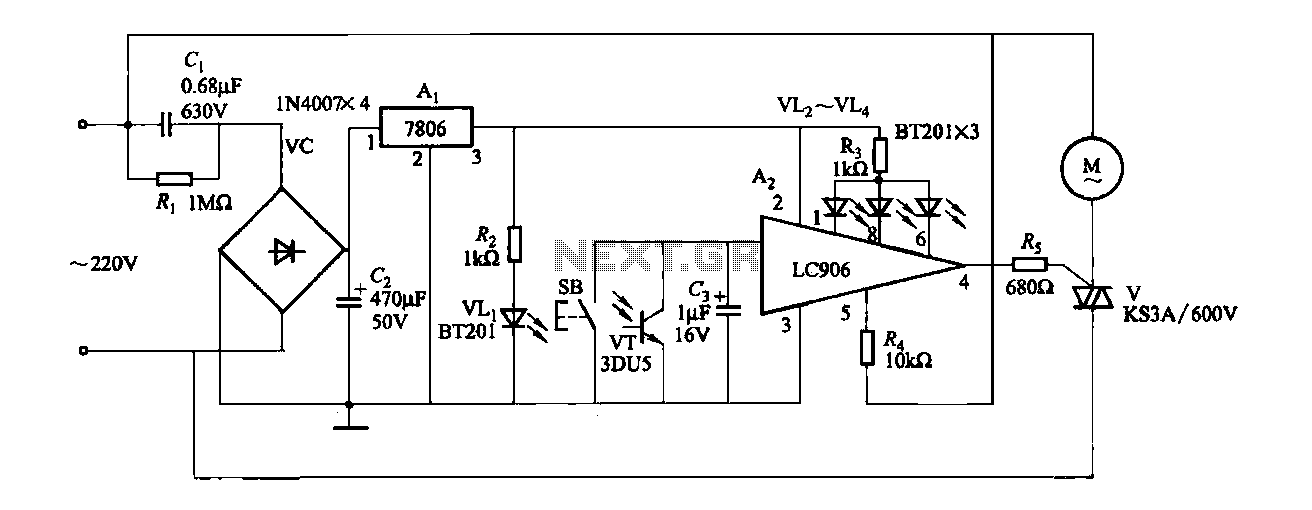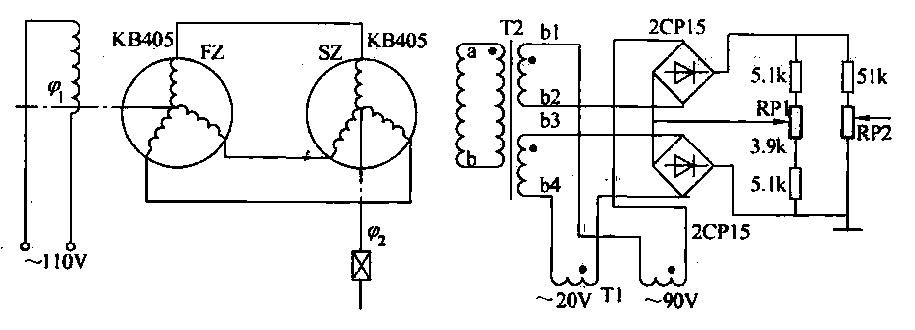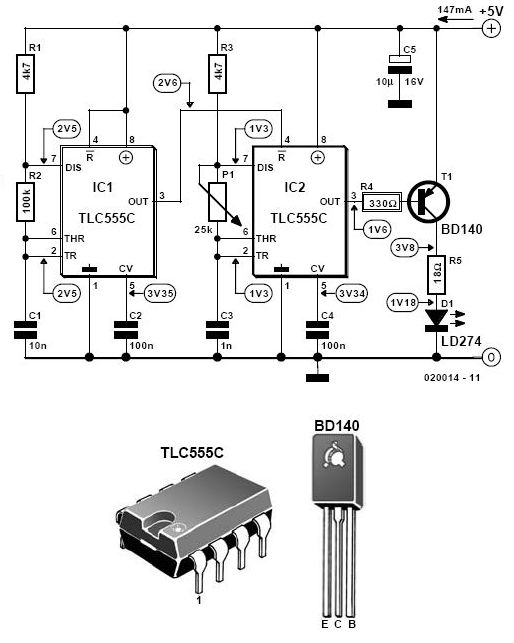
Temperature Meter circuit

This temperature meter utilizes the precision micro power centigrade sensor IC LM35. The output voltage of the IC is linearly proportional to 10 mV per degree centigrade.
The LM35 temperature sensor is a versatile and widely used device in electronic temperature measurement applications. It provides an accurate representation of temperature in the form of an analog voltage output. The linear relationship between temperature and output voltage allows for straightforward interfacing with analog-to-digital converters (ADCs) or microcontrollers.
The LM35 operates within a temperature range of -55°C to +150°C, making it suitable for various applications, from environmental monitoring to industrial temperature control. The sensor requires a power supply voltage typically ranging from 4V to 30V, providing flexibility in design.
In a typical circuit configuration, the LM35 is connected with its V+ pin to a positive voltage supply, the V- pin to ground, and the output pin connected to the measurement system or ADC. The output voltage can be read directly in degrees Celsius, as it is calibrated to produce 10 mV for each degree of temperature. For example, at 25°C, the output voltage would be 250 mV.
To enhance the accuracy of temperature readings, it is advisable to include bypass capacitors near the power supply pins of the LM35. This helps to filter out any noise that could affect the sensor's performance. Additionally, the output can be amplified using an operational amplifier (op-amp) if a higher voltage output is required for interfacing with other components in the circuit.
Overall, the LM35 sensor is an excellent choice for precision temperature measurement applications, providing reliable and linear output for easy integration into various electronic systems.This temperature meter uses the precision micro power centigrade sensor IC LM35. The output voltage of the IC is linearly equal to 10Mv per degree centigr. 🔗 External reference
The LM35 temperature sensor is a versatile and widely used device in electronic temperature measurement applications. It provides an accurate representation of temperature in the form of an analog voltage output. The linear relationship between temperature and output voltage allows for straightforward interfacing with analog-to-digital converters (ADCs) or microcontrollers.
The LM35 operates within a temperature range of -55°C to +150°C, making it suitable for various applications, from environmental monitoring to industrial temperature control. The sensor requires a power supply voltage typically ranging from 4V to 30V, providing flexibility in design.
In a typical circuit configuration, the LM35 is connected with its V+ pin to a positive voltage supply, the V- pin to ground, and the output pin connected to the measurement system or ADC. The output voltage can be read directly in degrees Celsius, as it is calibrated to produce 10 mV for each degree of temperature. For example, at 25°C, the output voltage would be 250 mV.
To enhance the accuracy of temperature readings, it is advisable to include bypass capacitors near the power supply pins of the LM35. This helps to filter out any noise that could affect the sensor's performance. Additionally, the output can be amplified using an operational amplifier (op-amp) if a higher voltage output is required for interfacing with other components in the circuit.
Overall, the LM35 sensor is an excellent choice for precision temperature measurement applications, providing reliable and linear output for easy integration into various electronic systems.This temperature meter uses the precision micro power centigrade sensor IC LM35. The output voltage of the IC is linearly equal to 10Mv per degree centigr. 🔗 External reference





